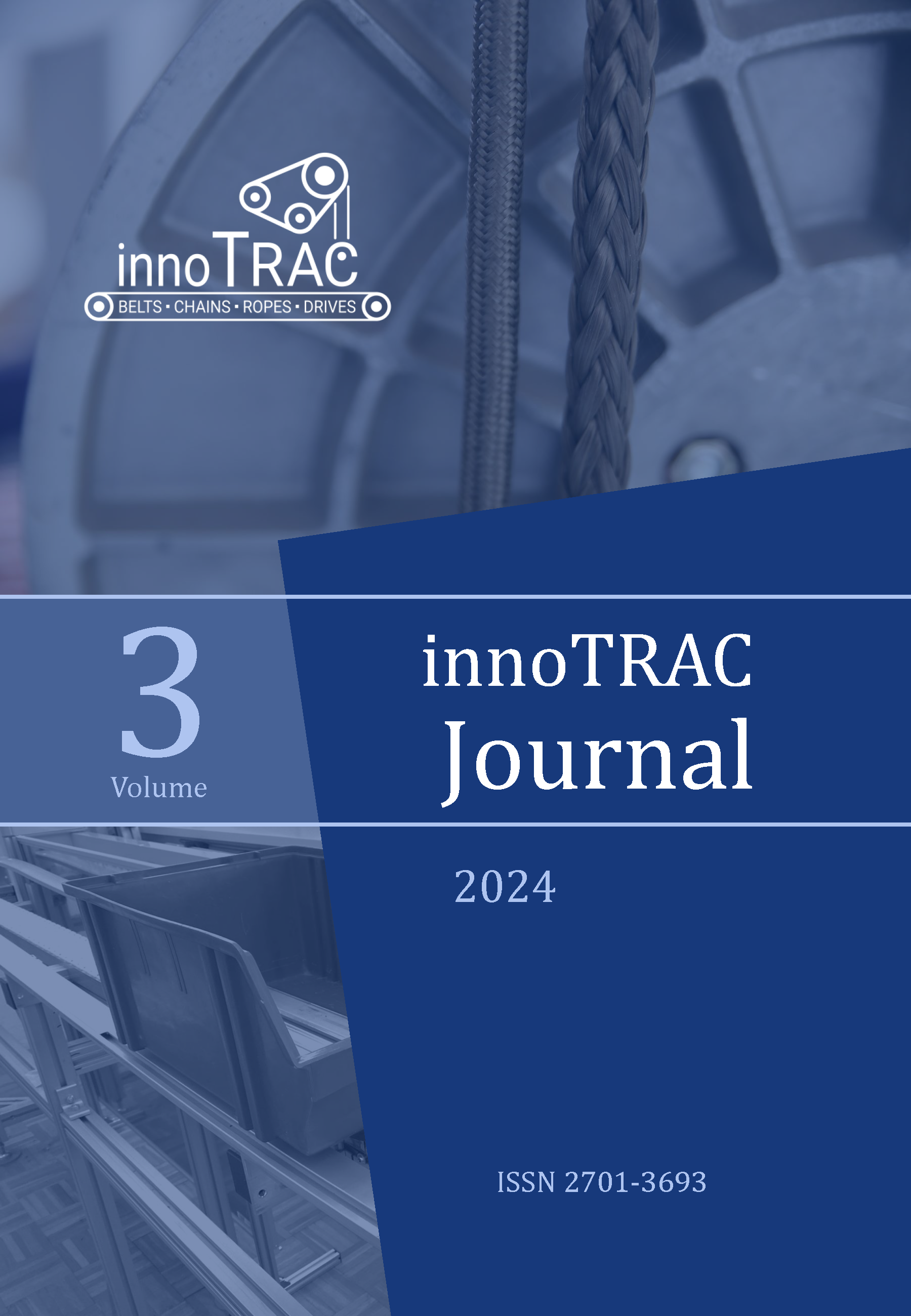Theoretical comparison of ISO/WD 16625:2023 with DIN EN 13001-3-2:2015 for the selection and verification of wire ropes for cranes and hoists
DOI:
https://doi.org/10.14464/innotrac.v3i1.801Keywords:
ISO 16625, cranes, hoists, wire rope, proof of competence, static strength, fatigue strength, running ropeAbstract
The paper focuses on a theoretical comparison between the newly designed ISO/WD 16625:2023 and DIN EN 13001-3-2:2015 valid at EU level in the context of the proof of competence of running wire ropes in vertical rope drives of cranes and hoists. The differences between the approaches to the proof of static strength and the proof of fatigue strength are discussed. With the help of the definition of application examples, variations in load spectrum factors and total number of working cycles, for the selected group class Ac3 for a 4/1 reeving system are considered by calculation and the results are compared with each other. There is also a variation of the ratio of the rope bending diameter D to the rope diameter d and the lifting range with an influence on the bending cycles per working cycle. This shows that, compared to DIN EN 13001-3-2:2015, the new ISO/WD 16625:2023 leads to a partially significant increase in the number of wire ropes required over the service life of a crane or hoist by taking into account the maximum tensile force of wire ropes depending on the D/d-ratio. DIN EN 13001-3-2:2015 refers to a single characteristic curve with a defined exponent, which calculates a higher load capacity for a rope in the event of fatigue. However, this results in risks of premature and unpredictable failure. The new ISO/WD 16625:2023 corrects and approximates the realistic fatigue behavior, which increases the safety of crane operation.
Downloads
Published
How to Cite
Issue
Section
License
Copyright (c) 2024 Tobias Schöneck

This work is licensed under a Creative Commons Attribution 4.0 International License.
All articles will be published open access under the license Creative Commons Attribution 4.0 (CC BY 4.0).

